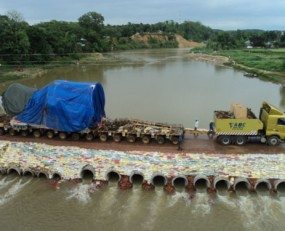
There is a great deal of appetite for logistics assets in India, from both abroad and at home. According to bulls on the market, skyrocketing e-commerce volumes across the country over the medium term will provide a high-margin, high-volume business for years to come in market that remains highly fragmented, both vertically and geographically.
Some projections for online retail sales in India between 2014 and 2020 imply a compound annual growth rate of 50% or more, from a level of $5bn in 2014.
Japan’s Nippon Express, for example, is reportedly in talks with two private equity firms to buy a 43% stake in TVS Logistics, which has been considering an IPO for a while, without succeeding. Other suitors are reportedly attracted to TVS’s business, while certain other would-be suitors are understood to be to monitoring the Indian market, looking for appealing assets.
In this context, ABC India is a relatively small logistics player operating in three primary business segments – freight and services, petrol pump activities and construction.
With 275 employees, and a small revenues base of $18m (less than $70,000 of sales per employee), it claims to be a pioneer in the field of logistics “since its inception more than 49 years ago when there were hardly any other organised cargo transporters in India”.
It adds that it “became the first public transport company in India by listing on the Calcutta Stock Exchange”, but its most recently published balance sheet does not reflect the sort of optimism that bulls have on the Indian market.
Its latest audited results for the quarter ended March 31 clearly indicate that most financial metrics are under pressure – revenues, operating cash flows and operating earnings are all falling, which led the company to adopt a less generous capital distribution strategy in recent times.
Problems started to show in the 2014/2015 financial year.
At the time it said “due to paucity of profit during the year under review and to conserve the resources of the company for long term working capital requirements, the board of directors (…) could not recommend any dividend (…) for the financial year ended 31st March, 2015.”
Its lenders – State Bank of India, United Bank of India and Indian Overseas Bank – will not feel reassured by its latest financials.
In the first quarter ended March 31, the company reported sales of INR336.3m against INR366.6m a year ago.
Operating losses before other income, finance costs and exceptional items were INR0.319m, down from INR0.557m a year ago.
Other key financial metrics were similarly disappointing.
Source: Transport Intelligence, July 13, 2016
Author: Alessandro Pasetti